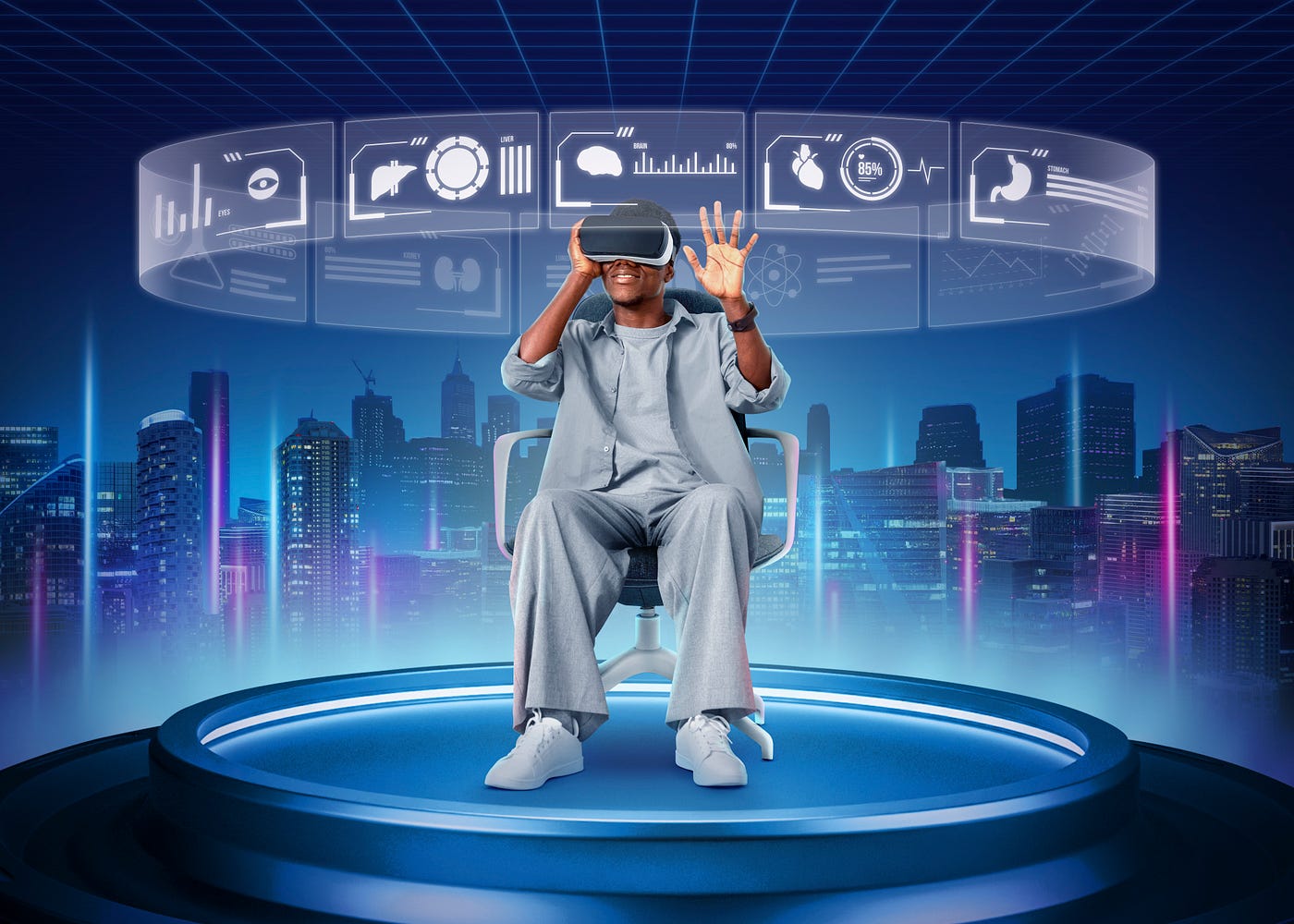Jan 18, 2024
Introduction
In the fast-paced realm of Augmented Reality (AR), Virtual Reality (VR), and Mixed Reality (MR), technological advancements are occurring at the speed of light, reshaping industries and redefining user experiences. Just as Nikola Tesla revolutionized the world with alternating current, the tech landscape is constantly shifting, and staying ahead of trends is crucial. In this article, we unravel the intricacies of the most up-to-date technologies driving AR/VR/MR development, shedding light on the tools and devices shaping the immersive future.
Augmented Reality (AR):
Marker-based AR:
Vuforia:
Vuforia stands as a leading SDK for AR applications, offering robust computer vision technology and real-time interaction with simple 3D objects. It excels in recognizing both flat and dimensional markers.
WikiTude:
WikiTude is a versatile cross-platform SDK facilitating the creation of location-based, marker, or markerless AR experiences. Its latest version boasts markerless 3D object tracking, object/image recognition, and compatibility with ARKit and ARCore.
EasyAR:
EasyAR is an SDK supporting 3D object recognition, environment perception, cloud recognition, smart glass solutions, screen recording, app cloud packaging, and content integration support.
Surface-Based AR:
ARKit:
Apple's ARKit is an advanced SDK for iOS, providing unparalleled AR experiences through vertical tracking, impressive 3D graphics, and seamless incorporation of real-world objects into AR environments.
ARCore:
Google's ARCore, designed for Android 7.0 users, offers essential AR features like motion tracking, environmental understanding, and light estimation. Its growing device support makes it a powerful choice for AR development.
Face Recognition Technology:
Face recognition technology utilizes neural networks and machine learning to identify and overlay digital content on human faces with high precision. It finds applications in various AR scenarios, including makeup apps.
Geo-Based AR:
Geo-based AR leverages sensor-based devices such as GPS, compass, and accelerometer to work with geo-referenced data. This technology unlocks AR content specific to certain geolocations, making it applicable both outdoors and indoors.
Object Recognition:
Object recognition enables the identification of shapes and positions of objects using device cameras, allowing for the overlay of digital information on specific objects. This is particularly useful for providing additional textual or visual information.
Virtual Reality (VR) Applications:
Mobile VR (iOS & Android, Samsung Gear VR):
Samsung Gear VR:
Samsung Gear VR offers a comfortable and accessible VR experience for the majority of users, especially those with Samsung flagship smartphones. Building VR applications for Samsung Gear VR is simplified using platforms like Unity.
Google Daydream:
Google Daydream, designed by Google, competes with Samsung Gear VR as an easy-to-use headset. Building apps for Google Daydream reaches a vast audience, providing an interactive and powerful VR experience.
PC VR (HTC Vive and Oculus Rift):
HTC Vive & Oculus Rift:
High-end VR headsets like HTC Vive and Oculus Rift offer unparalleled immersion with high-quality 3D graphics. HTC Vive, known for its resolution, audio, and immersion, competes with Oculus Rift, offering affordability and a resolution of 2160 x 1200.
Standalone VR (HTC Focus and Oculus Go):
HTC Focus and Oculus HMDs:
Standalone VR HMDs, such as HTC Focus and Oculus Go, cater to users seeking comfort and portability. These wireless devices, compatible with Unity and Unreal, provide extraordinary VR experiences without the need for a powerful PC.
Mixed Reality (MR) Applications:
Microsoft HoloLens:
Microsoft HoloLens is an innovative AR holographic headset featuring sensors, processors, and cameras for overlaying a perfect digital image onto the real world. It supports both 2D and 3D applications, making interactions with content seamless.
Vuzix and Meta:
Vuzix specializes in Smart and AR glasses, offering devices like Vuzix Blade and M300 Smart Glasses. Meta Smart Glasses contribute to everyday life, providing virtual games, face recognition, and holographic visualizations.
Magic Leap:
Magic Leap, a highly anticipated MR headset, promises a new level of immersion through unique light beaming methods. Its pixel-free display enhances realism, setting it apart from other AR and VR headsets.
Leap Motion:
Leap Motion offers hand-tracking controllers embedded into VR/AR headsets, eliminating the need for gloves. Motion Live, designed for live broadcasting, enhances user interactions in virtual environments.
Epson Smart:
Epson Smart Glasses offer excellent transparency and functionality, combining digital content with the real world. Wireless and Bluetooth connectivity make these glasses versatile for various applications.
360 Tours:
VR HMDs:
Head-mounted displays enable users to immerse themselves in virtual environments, making VR tours accessible across diverse industries, including healthcare, manufacturing, and business.
Mobile Devices:
Virtual tours on mobile devices utilize panoramic photos or videos to create a sense of travel within existing or fictional locations. Navigation through these virtual spaces is achievable with simple actions.
Video & Photo Content:
Virtual 360 tours can be created using photo or video materials captured by 360-degree cameras. Panoramic photos suit static locations, while videos are preferred for dynamic environments, offering captivating virtual reality experiences.
Conclusion

In the dynamic world of AR/VR/MR technologies, staying informed about the latest advancements is essential for developers, businesses, and enthusiasts alike. Whether exploring the potential of ARKit and ARCore, creating immersive VR experiences for standalone headsets, or delving into the cutting-edge realm of Mixed Reality, embracing these technologies opens doors to unparalleled possibilities. As the tech world of AR/VR/MR continues to captivate users, staying tuned and adapting to emerging trends ensures a journey through a digital landscape that knows no bounds.




